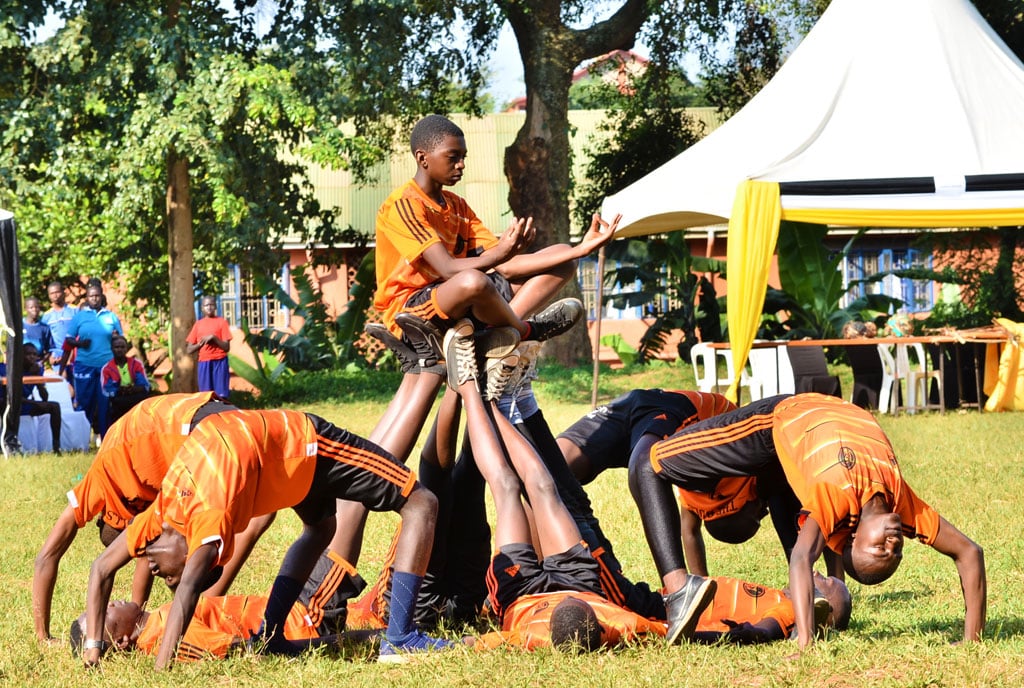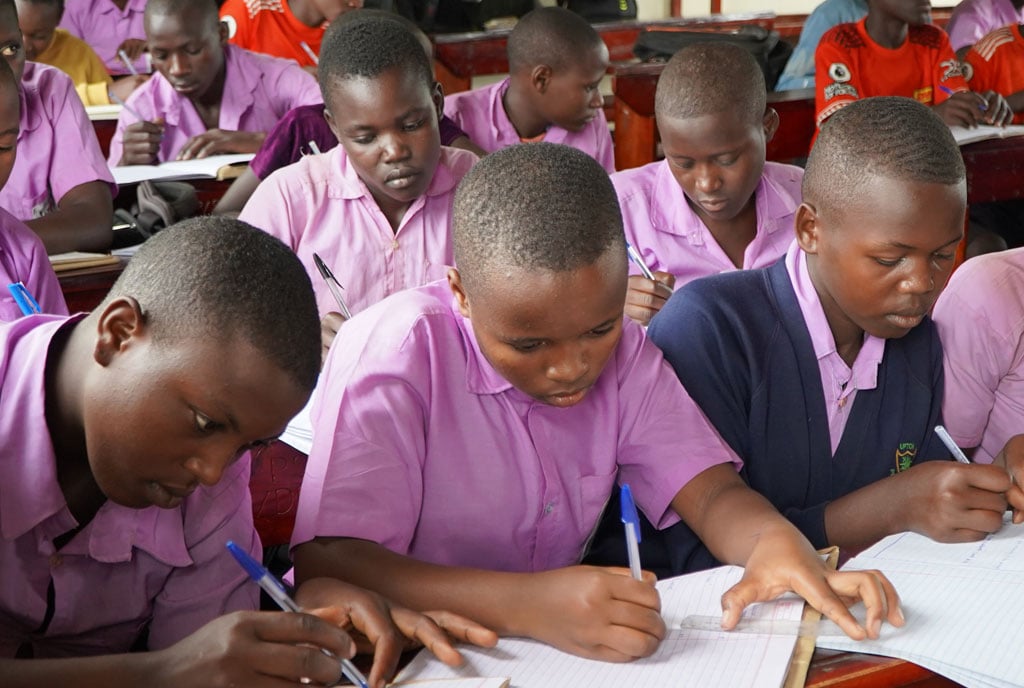Prime
From theory to practice: Bridging the gap in Uganda’s PE curriculum

A ‘ninja’ meditating yoga at the Physical Education National Festival at Kibuli Senior Secondary School in Kampala. PHOTO/GEORGE KATONGOLE
What you need to know:
- Imagine a typical school day in Uganda. Children pour into classrooms, armed with books and pens, ready to be filled with knowledge. But when it comes to PE, their enthusiasm wanes.
- Why so? The new lower curriculum in Uganda has brought significant reforms in education. But the PE portion is still lagging.
In a world where school-going children are often confined to classrooms, unable to meet the World Health Organisation’s daily Physical Activity (PA) recommendations of at least 60 minutes per day, the importance of Physical Education (PE) in the curriculum cannot be over-emphasised.
Yet, this is an area that still trails behind in Uganda’s new lower curriculum.
Last month, however, saw a promising step forward with the Ministry of Education and Sports, partnering with the interim Committee for the Uganda Physical Education Teachers Association (PETA), hosting the inaugural Physical Education National Festival at Kibuli Secondary School.
The one-day event served as a test of teachers’ competence and aimed to promote the subject in schools across the country.
Physical education is compulsory for Senior One and Two students under the new competence-based lower curriculum since 2022.
The roll-out of the new curriculum was delayed by 18 months due to Covid-19 school closures, which affected training and engagement practices for teachers, school leaders and other stakeholders.
More than 130 teachers who had been oriented in January 2023 participated in the inaugural festival. These educators, who received training at Kibuli in 2021 and 2003, now serve as lead facilitators.
Ms Hajarah Ddembe, affectionately known as the “Mother of Physical Education,” also the Principal Education Officer for Physical Education and Sports emphasises the need for boosting creativity and innovation in teaching methods. This, she believes, could truly revolutionise Physical Education in Uganda.
“The key to unlocking the full potential of physical education lies in continuous orientation on improvisation. By adopting physical education in more schools, we can ensure that students achieve meaningful milestones in their academic development,” Ms Ddembe said.
But she stated bottlenecks holding back the subject as representatives from eight of the 13 regions, including Ankole, Acholi, Busoga, Central, Greater Masaka, Rwenzori, Bunyoro, Lango, and Mukono, participated in the national festival. West Nile, Kigezi, Teso, Karamoja, and Mbale missed the event.
The inaugural Physical Education National Festival served as a platform for learners to showcase their practical skills and projects related to physical education.
Each of the regions presented a peer-facilitated physical education lesson and engaged in practical activities. The festival also featured exhibitions and fitness assessment sessions to engage and assess the participants’ physical abilities.

Students from northern Uganda display improvisation skills with locally-made balls at the festival. PHOTO/GEORGE KATONGOLE
The festival sets the stage for future events, which will become bi-annual with a minimum duration of three days. These festivals will help in promoting physical education, sensitising school communities, and increasing student participation in the implementation of the curriculum.
Challenges
Despite its promise, the new curriculum in Uganda has hit a few roadblocks. Initially, it was met with a lukewarm reception from teachers, school leaders, parents, and the community at large. The shift from a teacher-centric approach to a learner-centric one, not to mention the change in teaching methods, poses a significant challenge, particularly for seasoned educators and leaders.
Firstly, there is a general lack of resources. Ms Ddembe observes that schools, especially those in remote areas are at the greatest risk.
“Schools, especially those in remote areas, lack adequate sports equipment. The little they have is either outdated or in a sorry state. This cripples the practical aspect of PE, making it uninteresting for students,” Ms Ddembe said.
But during the orientation, schools were examined on skills that teach improvisation to be able to deliver the subject.
The teachers’ dilemma
Teachers are, without a doubt, the backbone of the educational system. Yet, when it comes to Physical Education (PE), they seem to be left in a tricky position. Ill-equipped and undertrained, they’re expected to deliver comprehensive PE lessons. A total of 130 teachers have undergone orientation in teaching PE till January 2023.
Support system
Parental and community support is key in championing Physical Education (PE) in Uganda.
However, it’s like the old saying goes, “it takes a village to raise a child.” When it comes to PE, it seems our village is a bit scattered.
Many parents and community members view PE as ‘just play’ rather than a vital aspect of learning and development. This perception hinders the progress of PE as it’s relegated to the periphery of ‘real education’.
This imbalance creates a ripple effect, causing PE to be less valued within the school curriculum.
Perceptions
On paper, Uganda’s new lower curriculum seems to promise a shift towards a more inclusive and dynamic approach to physical education (PE). But on a closer examination, there is a glaring gap. The disparity between the outlined policy and its practical execution is hard to ignore.

A pupil from Ankole region shows the locally made dumbells. PHOTO/GEORGE KATONGOLE
Education systems often treat PE as an afterthought, overshadowed by academic subjects. For years, Ugandan schools have been more focused on producing book-smart students. This fixation on theoretical knowledge has left PE in the shadows.
Many schools lack dedicated spaces for PE lessons, with pupils often having to make do with cramped classrooms or uneven outdoor spaces. This lack of proper spaces not only hampers the quality of PE teaching but also poses a risk to the safety of the students.
No one’s expecting state-of-the-art sports facilities, but a conducive learning environment is essential.
Relatedly, PE is often the first casualty when schools are faced with a time crunch or resource constraints. Instead of being treated as an essential part of the curriculum, it’s often seen as a dispensable extra. Schools may argue that academics are the priority, but this mindset only widens the gap between PE and other subjects.
“PE is fundamental to the overall development of a child. It is time we start treating it as such,” says Bashir Ssekandi, a PE instructor.
Considering the fiscal aspects, there’s a ray of hope. The budget allocation for this vital sector has seen a commendable leap from a meager 0.60 percent to a promising 2 percent of the budget share of the overall sector. That’s progress, albeit slow.
Who’s teaching the teachers?
The lack of adequate teacher training for Physical Education (PE) remains a significant hurdle. Many teachers are not equipped with the necessary skills to effectively deliver PE lessons. Their training is often too general, lacking the specialisation and depth required for PE instruction.
Jacqueline Basemera, an official at the ministry of Education says Teacher Training Colleges are now prioritising in-service physical education, to bolster the momentum for the subject across the country.
Basemera adds that stakeholders need to address any gaps in the implementation of physical education, paving the way for a comprehensive and impactful program.
She emphasised that physical education is a deliberate effort to vocationalise education in Uganda. Basemera highlighted the utilisation of the competence-based curriculum for lower secondary, which promotes practical skills acquisition.
In general, the new curriculum emphasises group work, group presentations, peer-to-peer learning and learner-centred teaching to develop the confidence, oratory and presentation skills exhibited by the students.
The curriculum also promotes teamwork and critical thinking because of the peer learning strategy, where learners pair up to share their understanding of a particular concept and hence learn from each other. The teacher then intervenes to check for understanding and clarify any concepts or doubts that the learners may have.
Basemera adds that the country will reap from a well-rolled-out competency-based curriculum.
“The change from knowledge acquisition to competency and skills acquisition is a big shift that aligns with global teaching and learning practices, as well as our national vision for 2040, specifically skilling youth and preparing them for the world of work,” she says.
Redefining success
Physical education doesn’t just keep kids fit – it builds team spirit, boosts mental wellbeing and teaches vital life skills. To move this ball forward, it’s key to investing in training, first of all.
Many schools in Uganda lack the necessary resources to provide quality PE – both in terms of training and equipment. But the game isn’t over. Innovative solutions, like partnerships with sports organisations or community fundraising, could help to score the needed funds.
Importantly, PE needs to be fully integrated into the new lower curriculum. This doesn’t mean simply squeezing it into a spare slot in the timetable. It means recognising PE as a priority subject, giving it dedicated time and proper assessment criteria. Ms. Ddembe says it’s a goal that’s certainly achievable.
What next
In Uganda, the Ministry of Education and Sports (MoES) in 2009 directed and reinstated teaching of physical education (PE) in secondary schools. This is because PE has been attributed to many positive effects on learners which include: improving academic performance and preventing diseases. It was implemented in 2020 with the support of the National Curriculum Development Centre.




